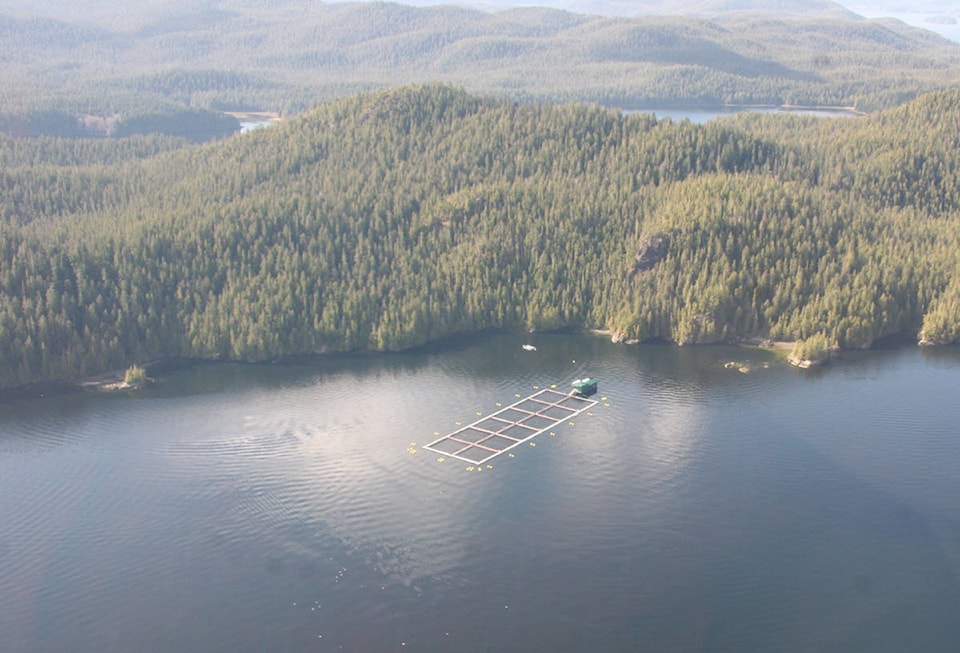Cermaq Canada is seeking permission to use hydrogen peroxide to kill sea lice at its Clayoquot Sound fish farms.
The company has submitted an application to B.C.’s Ministry of Environment that, if approved, would allow it to use up to 2.3 million litres of a pesticide called Paramove 50 to treat its farmed fish for sea lice from January, 2018 to Dec. 31, 2020.
Paramove 50 contains hydrogen peroxide, which Cermaq has never used at its Clayoquot Sound fish farms in the past but has been used by other fish farm companies. Marine Harvest was the first company to use it in B.C. in 2015.
“It’s all about maintaining the best fish health that we can. We want to make sure that our fish are healthy so that, if there are any interactions with wild fish in the area, there’s no risk and no threat coming to them from our fish,” Cermaq spokesperson Grant Warkentin told the Westerly News
“Wild fish carry sea lice naturally. That’s the way it’s been for thousands of years. It’s just a parasite that’s evolved and found itself a niche in the ocean ecosystem…The variable that we bring to the table as fish farms is that, if we don’t manage our farms properly, it can artificially increase the number of lice that’s there in a region. As long as we manage them properly and make sure that those levels are low, especially when the wild salmon are at the most vulnerable, when they’re young, we’re not creating any additional risk for the wild fish.”
He said Cermaq currently uses an insecticide called emamectin benzoate, referred to as SLICE, at its farms whenever a threshold of three louse per fish is reached, and that Paramove 50 would provide a valuable second option.
“We are applying for another tool to have in our toolbox for managing fish health on our farms, because right now we only have the one, which is SLICE treatment,” he said. “You can’t rely on one tool forever.”
He said SLICE is put on the fish’ food and ingested by lice-infected salmon, whereas the Paramove 50 treatment would be applied externally through a bathing process and that Cermaq hopes to avoid putting hydrogen peroxide directly into its ocean farm sites by, instead, vacuum-pumping salmon into well-boats to be bathed and then returned to the ocean.
He added, though, that that an approved application would allow Cermaq to place tarps around a farm site and put Paramove 50 in.
“That’s something that could happen. It’s in the application. But, the intention is to use well boats because that’s a lot more efficient, we use less product and it’s a lot less stressful on the fish,” he said. “Depending on the severity of the situation, or whatever’s going on at the site at the time, we would drop tarps around the system, like we do when we have plankton issues, and that would keep the hydrogen peroxide from leaving the site.”
Locals can submit feedback on the application until Nov. 30. Environmental organization Clayoquot Action launched an online petition on Nov. 16 calling on B.C.’s Environment Minister George Heyman to deny the application. The petition had reached 24,748 signatures on Nov. 20 and Clayoquot Action co-founder Dan Lewis hopes to have at least 30,000 signatures when he delivers the petition to Heyman on Nov. 30.
Lewis told the Westerly that he is “very concerned,” about the impacts Paramove 50 could have on local ecosystems.
“It isn’t hydrogen peroxide. It is a pesticide that has that as the active ingredient. There are surfactants and other chemicals in there that are supposed to hold it together,” he said. “Whether it goes into a well boat or they use it directly in the farm, they would release it into the environment…It’s horrible for the fish in the farms and it’s going to spread to the wild environment. There’s just no question about it.”
He suggested sea lice can build resistance to treatments very quickly and that allowing Paramove 50 to be used could lead to “chemical creep,” where stronger and stronger chemicals are needed.
“There is no treatment that can control sea lice. If we said, ‘Go ahead and dump an Olympic sized pool of pesticides into Clayoquot Sound,’ that wouldn’t even solve the problem of sea lice,” he said. “The only solution is to get these farms out of the ocean. That is the only way to control sea lice.”
Lewis is also concerned about how Cermaq will transport and store Paramove 50.
“It’s highly flammable. Where are they storing it? What will happen to it during a tsunami? What if a truck flips on the highway? There’s so many questions around this stuff,” he said.
